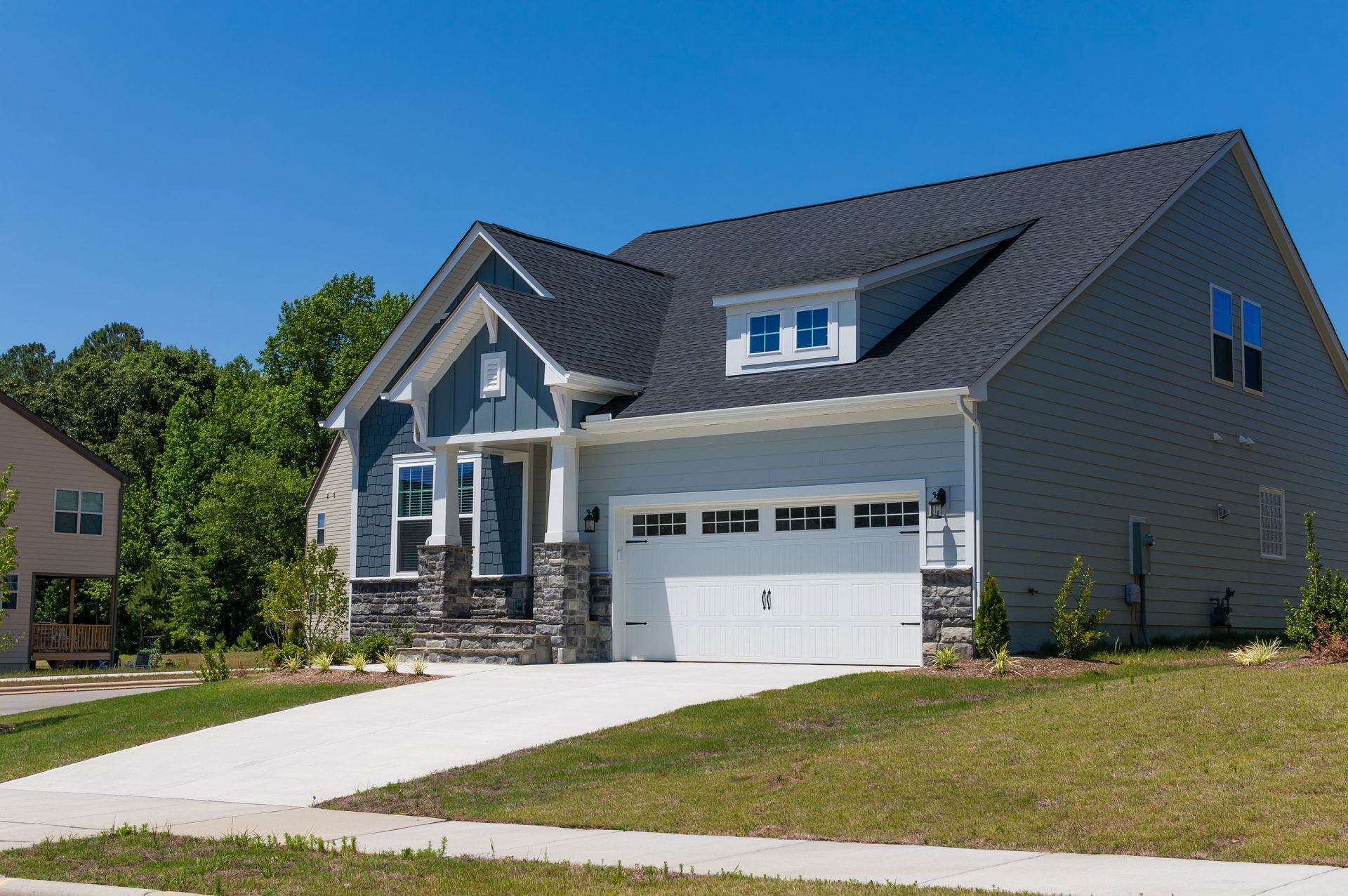How to Plan Your Home Remodeling Project Effectively
Home remodeling offers the exciting opportunity to transform your current house into a more functional, comfortable, and personalized living space. Whether you want to update a dated kitchen, expand your living area, or modernize outdated interiors, a remodeling project can dramatically improve your home’s value and enhance your day-to-day life. However, without proper planning and informed decisions, even the most promising projects can go off course.
With residential construction spending declining by 0.9% in April 2025, according to Reuters, homeowners are approaching remodeling efforts with greater caution and intentionality. Strategic planning is more important than ever to ensure that your investment yields satisfying results.
In this article, we’ll answer the most important questions homeowners typically have about the remodeling process. These insights can help you prepare effectively, stay on budget, and avoid unnecessary setbacks on your path to revitalizing your home.
Identifying Priorities and Setting Goals
Every successful home remodeling project begins with a clear understanding of your motivations and desired outcomes. Ask yourself what you hope to achieve. Are you seeking more usable space, improved energy efficiency, a style refresh, or perhaps better functionality for growing family needs?
Start by creating a list that distinguishes your needs from your wants. Needs are essential improvements, such as replacing an aging toilet or fixing water damage, while wants may include a gourmet kitchen or spa-like bathroom. Having this clarity allows you to focus your budget and energy on what matters most.
If you’re planning to sell in the future, you may want to focus on improvements that boost resale value, such as updating the kitchen, remodeling bathrooms, or enhancing curb appeal. On the other hand, if you intend to stay long-term, tailor the project to your lifestyle preferences.
Establishing a Realistic and Flexible Budget
Budgeting is often the most daunting part of planning a home remodeling project, but it's critical to set financial boundaries from the beginning. Begin by researching average remodeling costs in your area for the type of work you're planning. Prices can vary significantly depending on the materials chosen, the complexity of the design, and the local labor market.
In your budget, include not just construction costs but also permit fees, design consultations, demolition, debris removal, and potential temporary accommodations if you need to vacate the house. In our experience, it's also wise to allocate an additional 10–20% contingency fund for unexpected expenses, which are common in remodeling, especially in older homes.
Decide early on which aspects of the project deserve the most investment. For instance, if kitchen functionality is your top priority, spend more on high-quality appliances or custom cabinetry and less on decorative upgrades elsewhere.
Choosing a Contractor You Can Trust
The success of any home remodeling project hinges on the capabilities and integrity of your contractor. A skilled contractor brings not only technical know-how but also valuable insight on cost-saving methods, code compliance, and construction sequencing.
Start your search by asking for referrals from friends, neighbors, or coworkers who’ve had positive remodeling experiences. Check online reviews and verify the contractor’s license, insurance coverage, and certifications. Request and compare multiple bids to ensure you're getting a fair deal, but be wary of quotes that are significantly lower than the rest—they could signal inexperience or cost-cutting practices that may compromise quality.
Before signing a contract, ask for a detailed proposal that outlines the scope of work, materials to be used, payment schedule, timeline, and terms for handling changes or delays. Good communication, transparency, and a solid track record are non-negotiable traits in a contractor who will be working inside your home for weeks or even months.
Avoiding Mistakes That Can Derail Your Project
Even well-planned projects can encounter issues. However, being aware of frequent mistakes can help you avoid them. One of the most common errors in home remodeling is underestimating costs. This usually stems from over-optimism or failing to account for hidden issues such as outdated wiring or structural damage that only become evident once walls are opened.
Another widespread pitfall is inadequate planning. Rushing into construction without finalized designs or precise measurements can lead to costly mid-project changes. Work closely with your contractor and, if needed, a design professional to map out every detail before demolition begins.
Additionally, poor communication is a recipe for misunderstandings. Schedule regular check-ins with your contractor and clarify any uncertainties in writing. From material choices to layout changes, having a paper trail helps avoid disputes later.
Last, avoid the temptation to follow fleeting design trends without considering how they’ll age. Aim for improvements that balance modern appeal with long-term value and functionality.
Creating a Timeline and Managing Delays
Establishing a realistic project timeline is just as important as setting a budget. It not only keeps everyone aligned on expectations but also minimizes disruptions to your daily life. Begin by asking your contractor for an estimated schedule, including start and end dates, key milestones, and delivery times for materials and appliances.
Home remodeling timelines are affected by many variables, including weather conditions, permit approval delays, and backordered items. Build in a cushion of time for unexpected setbacks. For example, plan for a kitchen remodel to take between eight and twelve weeks rather than assuming it can be completed in a month.
To stay on schedule, avoid last-minute changes to design or materials. Each modification can create a domino effect, requiring reordering items, rescheduling subcontractors, or adjusting inspections.
Also, ensure that your contractor has a clear point of contact (you or your spouse) to make timely decisions and approve work as it progresses. Fast response times can keep the momentum going and prevent bottlenecks.
Adjusting Your Strategy to Market Conditions
With residential construction spending seeing a slight decline of 0.9% in April 2025, it’s a good time for homeowners to take a more calculated approach to home remodeling. This trend signals increased price sensitivity and a growing demand for smarter, more efficient improvements.
Rather than opting for luxury overhauls, many homeowners are focusing on targeted upgrades that offer a strong return on investment, such as energy-efficient windows, modern flooring, or smart home technology. These improvements tend to appeal to buyers and also offer long-term savings in utility bills.
In a tighter market, it's also beneficial to source local materials and work with suppliers who have predictable inventory. This can help reduce lead times and limit the risk of project delays.
Undertaking a home remodeling project is a major endeavor, but one that can yield lasting rewards when approached thoughtfully. The key is to plan carefully, budget wisely, select a dependable contractor, and maintain open communication throughout the process.
Keep in mind that remodeling isn’t just about aesthetics; it's about creating a home that reflects your lifestyle and adapts to your future needs. Whether you're revamping a single room or undertaking a whole-house renovation, the effort you put into preparation will significantly impact the success of the outcome.
Now is the perfect time to reimagine your living space and invest in upgrades that enhance both form and function. With the right planning and execution, home remodeling can improve energy efficiency, increase property value, and bring daily comfort to you and your family. From the smallest design choice to the largest construction detail, every thoughtful decision contributes to a home that feels more personalized, welcoming, and enduring.
When you take the time to get it right, the results aren't just visual, they're deeply rewarding, providing peace of mind and a space that truly feels like home for years to come. If you're ready to breathe new life into your home, call the professionals at W.J. Hand Builders today!





Share On: